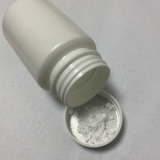Chinese VersionChina Suppliers > Hubei new DE sheng material science and technology co., LTD. > PIPES buffer and TRICINE buffer
- Search Product
-
- Details for PIPES buffer and TRICINE buffer
-
PIPES buffer and TRICINE buffer
Category : Laboratory Chemicals

CAS NO : EC NO : MF : MW : Product description : What is PIPES buffer PIPES Buffer (CAS5625-37-6) chemical name is 1,4-piperazine diethanesulfonic acid, which is a zwitterionic biological buffer. It is a white powder solid at room temperature. PIPES Buffer is not easily soluble in water (1g/L (100C). It can be dissolved by mixing equimolar sodium salt solution and titrating to the appropriate pH value. For example, PIPES Buffer (CAS76836-02-7) and PIPES sesquisodium salt ( CAS100037-69-2). Application of PIPES Buffer PIPES Buffer is widely used in cell culture, chromatography, cosmetics, diagnostic testing, protein purification and electron microscopy research. PIPES Buffer is similar to MES Buffer and MOPS Buffer (also produced by Desheng). This Good's Buffer lacks the ability to form complexes with most metal ions, so it is recommended to be used as a non-coordinating buffer in metal ion solutions. Advantages of PIPES Buffer According to related literature, the use of NaOH-PIPES buffered glutaraldehyde solution in the ultrastructure of various tissues, such as human skin, human hypertrophic scars, mollusk neuron tissue, etc., the results show that more organelles and organelles can be observed Between the details. The cytoplasm is more uniform in consistency. Compared with NaOH-PIPES buffer, microfilaments and microtubules are more common in PIPES tissues. In addition, PIPES Buffer is proven to be comparable in living cells. What is TRICINE buffer TRICINE Buffer (CAS 5704-04-1), a zwitterionic biological buffer containing amine and acid groups. This product is a white crystalline powder, slightly soluble in water (the solubility is 1.8g/100ml water). Application of TRICINE Buffer TRICINE is widely used in cell culture and electrophoresis research. As a buffer for cell culture research, TRICINE can inhibit the unexpected growth of mycoplasma in animal tissue culture. It has also been used in bacterial culture to prevent precipitation of iron salts. The Good's buffer can form complexes with most metal ions, such as Mg, Ca, Co, Cu, Ni, and Zn, so the stability constant and concentration should be considered when choosing the buffer. As a buffer for electrophoresis research, Tricine has been used as an alternative to protocols using the controlled substance barbital. Advantages of TRICINE Buffer TRICINE has a higher negative (more negative) charge than glycine, making it migrate faster. In addition, its high ionic strength results in more ion movement and less protein movement, so that low-molecular-weight proteins can be separated in a lower percentage of acrylamide gels. Tricine has been proven to be used to separate proteins in the range of 1 to 100 kDa by electrophoresis. In ten tests using firefly luciferase for ATP determination, 25mmol/L tricine buffer was found to be the most effective buffer. Synonyms : no data
- Inquire
-
PIPES buffer and TRICINE buffer